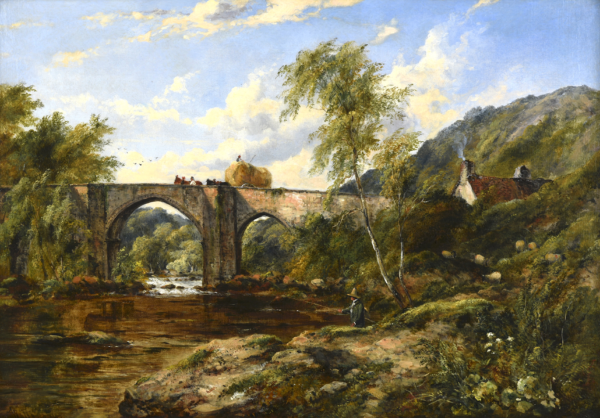Frederick W Watts also known as Frederick Williams Watts, or Frederick “Waters” Watts, so nicknamed due to the manner in which most of his paintings had ponds, pools of water or lake backgrounds. The son of William and Mary Watts,, Frederick was born in Bath, England on October 7, 1800, and baptized in St. Albans in Hertfordshire in 1801. He lived most of his life in the Hamptead Heath area of London.
Watts entered the Royal Academy Schools in 1817, winning multiple silver medals between 1818 and 1821. He exhibited at the Academy throughout his lifetime, beginning in 1823 and continuing up until his death in 1862. He also exhibited at the Royal Society of British Artists, Suffolk Street, New Bond Street, and at the New Watercolour Society. A contemporary of John Constable (1776 – 1837), Watts admired him greatly and painted very much in the style of this master. Thus while Frederick Watts was famous for never signing his works, they are easily recognizable by his “Constable like” style and the way the settings of his paintings are often matching the scenes that Constable painted. It seems likely that Watts settle in Hampstead Heath because it was the same area of London where Constable lived and had his studio.
This Watts painting, ‘At The Old Forge’ is a masterful work that pays homage to perhaps the most famous of all works by John Constable ‘The Mill at Dedham’.

